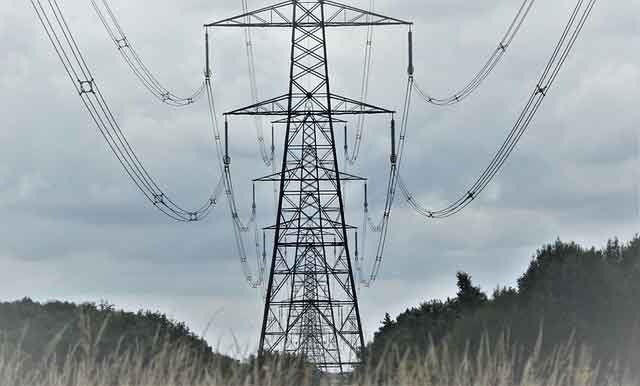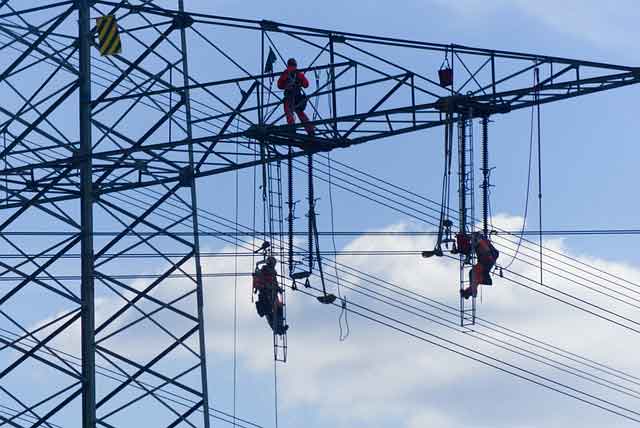Solar panels described as “eyesores”
By New York Times
Substation Relay Protection Training
Our customized live online or in‑person group training can be delivered to your staff at your location.

- Live Online
- 12 hours Instructor-led
- Group Training Available
“I hate them,” Mr. Olsen, 40, said of the row of panels attached to electrical poles across the street. “It’s just an eyesore.”
Around the corner lives Tom Trobiano, 61, a liquor salesman, now adapting to the lone solar panel hanging over his driveway. “When it’s up close,” he said, “the panel takes on a life of its own.”
Like a massive Christo project but without the advance publicity, installations have been popping up across New Jersey for about a year now, courtesy of New JerseyÂ’s largest utility, the Public Service Electric and Gas Company. Unlike other solar projects tucked away on roofs or in industrial areas, the utility is mounting 200,000 individual panels in neighborhoods throughout its service area, covering nearly three-quarters of the state.
The solar installations, the first and most extensive of their kind in the country, are part of a $515 million investment in solar projects by PSE&G under a state mandate that by 2021 power providers get 23 percent of their electricity from renewable sources. If they were laid out like quilt pieces, the 5-by-2.5-foot panels would blanket 170 acres.
New Jersey is second only to California in solar power capacity thanks to financial incentives and a public policy commitment to renewable energy industries seeded during Gov. Jon S. CorzineÂ’s administration. But what might have been a point of pride in a state better known as the nationÂ’s leader in toxic Superfund sites has instead caused suburban aesthetic unrest.
Some residents consider the overhanging panels “ugly” and “hideous” and worry aloud about the effect on property values.
Though nearly halfway finished, the company’s crews have encountered some fresh resistance in Bergen County, where cities, villages and boroughs are in varying stages of mortification. Local officials have forced a temporary halt in many towns as they seek assurances that they will not be liable in case of injury, but also to buy time for suggesting alternative sites — like dumps — to spare their tree-lined streets.
And here in Oradell, at least one panel has gone missing.
When and where the panels will show up next can be a mystery, prompting complaints over the lack of prior notice.
“I came back from running errands and there they were,” Mrs. Olsen, 37, said. “It’s not right. They should have warned us.”
In neighboring Ridgewood, Deputy Mayor Thomas M. Riche said constituents had called, sent e-mails and stopped him on the street demanding that he halt the encroaching blight. Ridgewood, an affluent village of about 24,000, got PSE&G to cease installations after only a few had been put up, over concerns that they would interfere with the emergency communications boxes on the poles.
The talks are continuing, Mr. Riche said, adding that he is trying to steer the Ridgewood panels to a town park-and-ride lot and its public schools.
“A cluster of panels in one area is better than individual panels all over the town,” he said. “We’re not against solar energy, but there are more efficient ways than having panels on the utility poles.”
PSE&G officials said their search for maximum sun exposure could not dodge and weave residential areas in a place as crowded as New Jersey. It turns out that only a quarter of the companyÂ’s 800,000 poles are suitable for the panels, which are mounted 15 feet high and need good southern exposure.
Solar industry experts approve of the decentralized pole-by-pole approach and said it could be just as efficient and cost effective as larger installations.
“Solar is extremely flexible,” said Monique Hanis, a spokeswoman for the Solar Energy Industries Association, a trade group based in Washington. “The utility owns the property already, and the panels can feed right into the transmission line.”
Ralph A. LaRossa, PSE&G’s president and chief executive, said that the company was also placing panels, which direct the energy they generate back into the power grid, at its industrial yards and on facility rooftops, and that it was leasing flat roofs of large buildings, including several schools in Newark. “We’re looking for ways to deploy the technology in the cheapest and most accessible way,” he said.
Yes, Mr. LaRossa said, his company could have communicated better, but he added that Bergen County had become “a pocket” of opposition in what had generally been a welcoming reception.
And not every burg in Bergen County is rebelling. Over in Fair Lawn, Mayor Lisa Swain said that her city had not interfered with the program and that she was trying to make the community sustainable in other ways, like using motion sensor lighting in city buildings.
“I’m going to do what I can,” she said.
Sean Smith, a 43-year-old airline sales supervisor in Fair Lawn, said he was fine with the seven panels on his street, especially “if it’s helping the greenhouse effect.”
“We have the kids to think about,” he said.
But his neighbor Tony Christofi, a 47-year-old contractor, wondered aloud whether Fair Lawn, by not fighting, was getting more than its fair share.
“I’m fine with green energy,” he said, “but are the savings going to be passed on to consumers?”
PSE&G officials said solar energy was still more expensive to produce than more traditional power sources and acknowledged that bills were going up 29 cents a month. Each panel produces 220 watts of power, enough to brighten about four 60-watt light bulbs for about six weeks. When complete, this project is expected to provide half of the 80 megawatts of electricity needed to power 6,500 homes.
Although he supports renewable energy, Gov. Chris Christie, through a spokesman, characterized the mandates that spawned the panel project as “extremely aggressive.” He has already asked that they be re-evaluated.
Over in Oradell, population 8,000, some residents say the new units arenÂ’t worth the effort, producing too little power for the aggravation.
The case of the missing panel has been referred to local law enforcement.
“PSE&G takes a very dim view of people tampering with the equipment,” said Francis Sullivan, a company spokesman, “but that’s secondary to the fact that it’s just a dangerous idea.” All the units are connected to high-voltage wires.
Richard Joel Sr., a lawyer in town, said a panel close to his house had been removed, but demurred when asked if he knew details.
“I’m not saying what happened,” he said.











